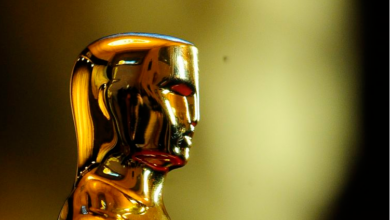The Digital Cinema category in the Cairo International Film Festival is one not readily recognized by your average film-goer, and the definition of digital film might not be wholly clarified by this year's festival. Digital film refers to any movie made using digital equipment–as opposed to traditional film–and the movies that fall under this defintion are aesthetically wide ranging, from the high budget blockbuster to the film school thesis.
Digital filmmaking became popular in the 1990s, with champions pointing to the durability and quality of digital movies over those using traditional methods. But perhaps the most compelling argument is cost; digital films are generally much cheaper to make than traditional films and so, although the technology has been used to produce extremely expensive films like "Avatar," it also appeals to the independent filmmaker who might not be able to afford film.
Entries in the CIFF seem to fall under this category–the storyteller on a shoestring budget who opts for digital in order to be able to produce with readily available, low quality digital cameras.
Regardless of the common equipment used, the films in the digital category are visually diverse and come from a variety of countries, proving how popular digital filmmaking is. The category includes the multicultural (Iraq/UAE/UK) “Tangled in Blue” and the Hungarian “Eastside Stories,” as well as a number of other movies from countries including China, Uganda and South Africa.
“The Door” is the only Egyptian movie in this category. Although the category might prove the diversity of digital films in the world, if "The Door" is any indication, it does not showcase the full potential of the medium.
“The Door” is a low-budget (under LE500) movie written, directed and produced by Mohamed Abdel Hafez, who explained to the crowd that this was the first time he had ever picked up a digital camera to make a movie. With that in mind, the 90-minute film is a feat, albeit a somewhat horrifying experience for viewers.
The movie tells the story of a young man named Ashraf who is described as a “victim of fate”–although he has an opportunity to live a better life, the narrator explains that fate drags him into misery. His back story includes two dead parents, an evil stepmother and a history of clinical depression. Tossed from family home to family home, Ashraf’s cousin, Hossam, invites him to stay at his apartment. Ashraf feels he has found the opportunity of a lifetime, but in the tour of the apartment of his dreams, he notices a door (the only reason he would notice it of course is because the door is randomly bright green with a painted lamp at the top) and asks Hossam what is inside. Hossam’s response (despite the reaction it ellicits) is a totally uninteresting one: “I keep some personal things in there.”
Of course, this is the idea behind the movie. Even as Ashraf brings his bags to the house in the next scene, he stares intensely at the door as if it held all the wonders (or horrors) of the world. And the door becomes “The Door”–a movie depicting strongly the nature of obsession and the downfall of man in the face of temptation. Other themes include the Biblical Adam and the apple; when Ashraf finally tries to get past the door, Hossam catches him and as the narrator so eloquently explains, “Ashraf is thrown out of Paradise.”
Perhaps the strongest themes in the movie are boredom, lack of guidance and, ultimately, despair–not only because the audience experiences these emotions while watching the film, but also because the entire movie depicts the fall of the young lower-middle class male, armed neither with the will power nor the role models to allow him to seize opportunities and turn his life around. Drugged, desperate and insecure, this character epitomizes what may be the fall of what might have once been the Egyptian Dream.
The movie stars Amr Abdel Hafez, the director/producer/writer’s brother, as Ashraf. He seemed to have the clearest vision of the film’s purpose. “The youth are plagued with boredom, yes,” explained Abdel Hafez. “But the problem is that they have no one to guide them to work constructively out of it.”
The other characters in the film include Hassan, Ashraf’s only friend and co-worker at a pharmacy, and an unnamed friend of Hossam, the cousin, who is described (but not portrayed) as a successful construction engineer.
The movie’s soundtrack is mainly instrumental, the dramatic moments severely overplayed by booming and crashing symphonies. The only nice and seemingly appropriate music (a song that appears to have been created and performed by a local band) comes when Ashraf and Hassan meet up at the apartment to smoke a joint. Unfortunately, the sound quality of the film is poor (with an LE500 budget, what can you expect) which made the heavy breathing throughout the movie and the dark, breathy, ominous, Darth Vader-like voice narrating parts of the movie almost unbearable for the audience.
The acting was mediocre, at best, with a lot of back patting for consolation and an overkill of slow reactions. Drug induced, perhaps, but the entire movie was not meant to be a trip.
The camera produced a dark, greasy and green visual image, distorted even further by effects used to produce dream sequences. The directing was good for a first-timer with only a couple glaring cinematographic mistakes (angles that helped no one show anything). Two fantastic (non-green) shots stood out: the bench at the beginning where Ashraf eats his sandwich and finds out he has a place to live and the shot of Ashraf in silhouette at the window, going over his conversations about the door.




